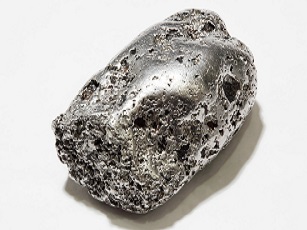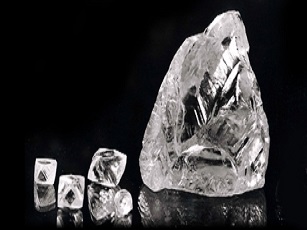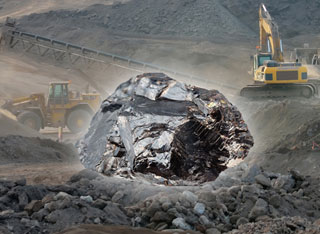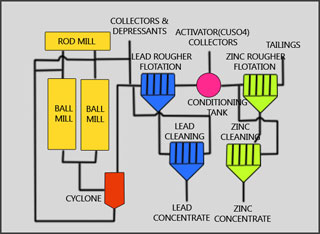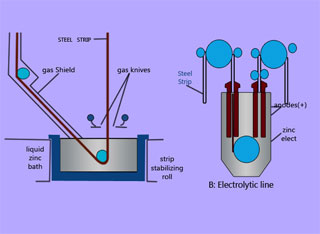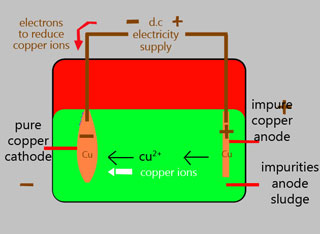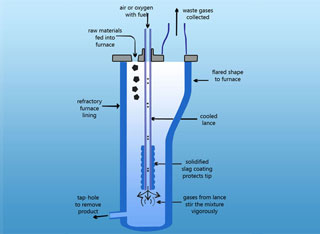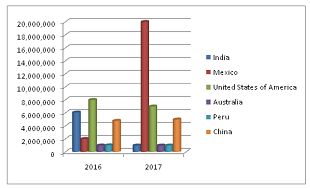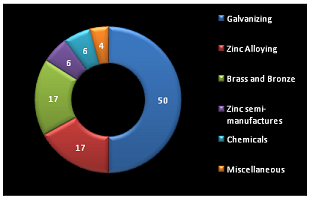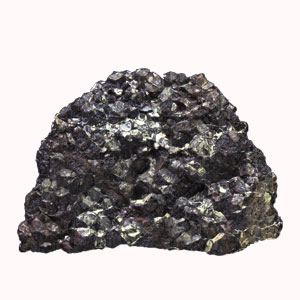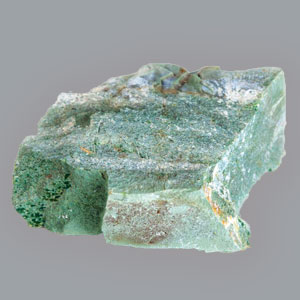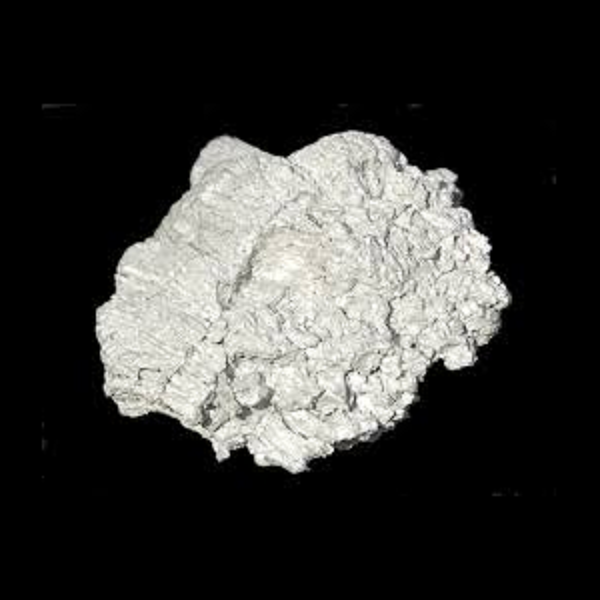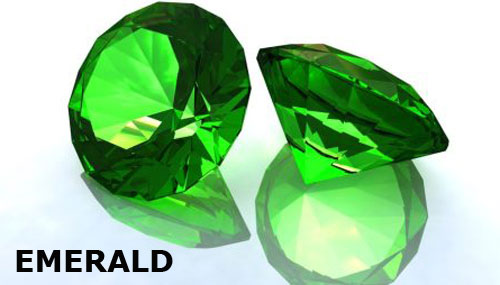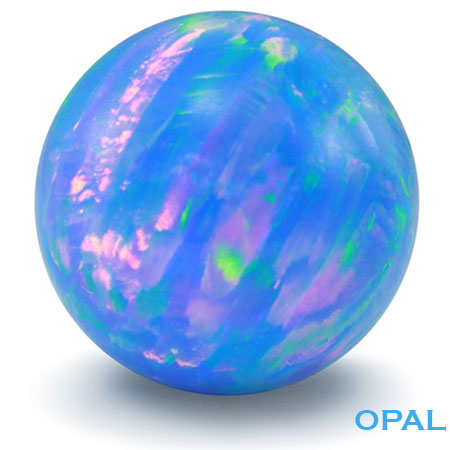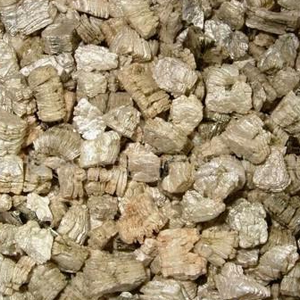ZINC MINING
DESCRIPTION :
Zinc is a bluish-white metallic chemical element that is ductile in its pure form but in the commercial form it is brittle at room temperature and becomes ductile on slight heating. It occurs amply in minerals and is considered an essential micro nutrient for both plants and animals.
* TOP 6 ZINC PRODUCING COUNTRIES
* LIST OF COUNTRIES BY ZINC PRODUCTION
MINING AND CONCENTRATING :
Zinc ores are obtained by many mining techniques, ranging from open-pit mining to the normal underground methods. The most common underground method of ore extraction is cut-and-fill stopping, in which tunnels are dug to moderate depths, branching away from the mine holes. The small fraction of zinc sulfide minerals present in the ore provides necessary benefits in order to produce a concentrate acceptable for treatment. The most used method for achieving this concentration is to isolate the sulfide mineral from the impure constituents by flotation separation. In this method, the ore is initially crushed to about 1.9 centimetres, combined with water, and the dirt to less than 0.1 millimetre. The finely ground particles and water form a slurry that flows from the mill to flotation cells or tanks, where, in the presence of some chemical reagents that create a suspension of air bubbles, the slurry is disturbed by beaters. The mineral particles attach to the bubbles and float to the surface, forming an oily froth that is constantly skimmed off, while the gangue is wetted by the action of the chemicals and sinks in the cell. The appropriate choice of frothing agents separate each constituent lead and zinc sulfides in a concentrated form.
EXTRACTION AND REFINING :
Platinum wasn't observed by western scientists until 1735. Platinum, in the form of the mineral sperrylite (PtAs2), is obtained as a byproduct of the nickel mining operation. Spanish people were the first Europeans to encounter the metal, although they found it a nuisance because of its similar appearance as silver. They referred to the metal as Platina, the Spanish word for silver. Although studied by a number of chemists in the mid-18th century, Francois Chabaneau was the first to produce a pure sample of platinum metal in 1783. In 1801, an English scientist William Wollaston invented a method for adequately extracting the metal from ore. Growing demand of the metal led to the discovery of large deposits in the Ural Mountains in 1824 and Canada in 1888. This ultimately led to geologist Hans Merensky's to discover the largest platinum deposit on earth.
1. Roasting and sintering :
Both the extraction methods for the production of zinc, electrolysis and smelting, require the prior removal of sulfur in a highly exothermic oxidation reaction :
For the electrolytic production of zinc, the roasting of concentrates is achieved in fluidized-bed roasters, in which finely divided and heated particles of the ore are suspended in a high rising stream of air. The sulfur content is reduced to less than 0.5 percent, and a high-strength of about 10 percent sulfur dioxide gas is forwarded to a sulfuric acid plant. The process is thermally efficient, and the resulting blaze is in the form of small particles that can be easily leached into solution for further treatment.The process explained above becomes difficult to operate if the grade of the ore falls and particularly if the lead content rises above 3 percent. For this reason, zinc-lead blast furnace utilizes a sintering process to supply its oxidized feed. Fine ores are mixed with crushed returned sinter to give a material containing about 6.5 percent sulfur. This is fed onto a moving grate and fired in an updraft of air, and the sintered cake leaving the machine is broken into a convenient bulge size. By the advantage of its strength and hardness, sinter is an ideal feed for the blast furnace.
2. Electrolysis :
The basic steps in this process include :-
(1) Preparation of a zinc sulfate solution by leaching zinc oxide calcines (produced by the roasting of sulfide concentrates) in dilute sulfuric acid
(2) Purification of the resulting zinc sulfate solution, and
(3) Electrolysis of the purified solution.
The theoretical voltage required to deposit zinc from zinc sulfate solution onto a cathode is about twice the voltage necessary to decompose water, so that, electrolysis should result in the production of hydrogen at the cathode and not the deposition of zinc. When a zinc cathode is used, however, overvoltage prevents the generation of hydrogen, and, hence, zinc is deposited. The hydrogen overvoltage depends crucially on the purity of the zinc sulfate electrolyte. The presence of certain impurities at even very low concentrations can cause a drastic lowering of the overvoltage and thus interfere with zinc deposition. For this reason, extreme purification of the electrolyte is a critical necessity in the method and is accomplished in two stages. The first stage is the removal of iron as a solid residue in the form of either jarosite (a basic ferric sulfate) or the oxides goethite or hematite. This is then followed by cementation with zinc dust to remove other metallic impurities (including copper, nickel, cadmium, cobalt, and germanium) from the solution.Electrolysis is performed in lead-lined concrete cells with anodes of lead containing 0.5-1.0 percent silver and cathodes of aluminum sheet. The zinc deposits are stripped from the cathodes every 24 to 48 hours and re-melted in an induction furnace before casting into blocks of metal. The purification of the electrolyte ensures that the normal product will reach a purity of 99.99 percent or more.
3. The zinc-lead blast furnace :
Sintered zinc and lead concentrates, are charged into the top of a cylindrical furnace, into which pre-heated air is blown through nozzles at the base. The important difference in this process is that the major products of reduction are a zinc-bearing gas and liquid phases that separate in the furnace fireplace and are tapped periodically.
The gas stream, containing 8 percent zinc, 10 percent carbon dioxide, and 20 percent carbon monoxide, is directed from the upper cylinder to a lead-splash condenser, a chamber in which an intense shower of lead droplets is thrown up by rotors revolving in a pool of molten lead. The zinc vapour is absorbed into the lead, and, by withdrawing the lead continuously and cooling it, the saturation point of zinc in lead is reached and molten zinc separates as a distinct layer on the surface. On removal of the zinc overflow, the partially cooled lead is returned to carry out further shock-chilling.In existing smelters, cylindrical furnaces vary in area from 15 to 27 square metres and capacities range from 50,000 to 100,000 tons of zinc and 30,000 to 50,000 tons of lead per annum. The zinc-lead blast furnace has the flexibility to accept a wide range of mixed ores and residues. Zinc can bypass the sinter roasting process.
4. Distillation refining :
The blast furnace produces an ordinary grade of zinc containing 1.2 percent lead. This can be used in general galvanizing, but an additional refluxing operation must be performed to produce high-grade zinc. The operation is performed in two fractionating columns, each consisting of a series of superposed rectangular trays made of bonded silicon carbide refractory material and arranged to allow a descending flow of liquid metal and an ascending flow of metal vapour. In the first column, a large part of the zinc is vaporized and freed from impurities with higher boiling points, such as lead and iron. The distilled vapour is condensed and fed into the second column, where the liquid's remaining impurity, cadmium, with a boiling point lower than that of zinc, is distilled. High-purity zinc is then run off from the bottom of the column.
TOP 6 ZINC PRODUCING COUNTRIES :
1. China: China is the world's largest producer of zinc and has consistently been the top producer for the past several years. In 2020, it produced 5.8 million MT, a decrease from 5.9 million MT the year before. The majority of the country's zinc output is sourced from mines located in the provinces of Yunnan and Guangdong.
2. Peru: Peru is the second largest zinc producer in the world and produced 1.2 million MT of zinc in 2020, a slight increase from 1.19 million MT in 2019. The country's main zinc-mining regions are located in the central and southern parts of the country, with the majority of production coming from the southern province of Ica.
3. Australia: Australia is the third largest producer of zinc and produced 1.1 million MT of zinc in 2020, a decrease from 1.3 million MT in 2019. The majority of the country's zinc production comes from mines located in the states of New South Wales and Western Australia.
4. India: India is the fourth largest producer of zinc and produced 1 million MT of zinc in 2020, a decrease from 1.1 million MT in 2019. The country's main zinc-mining regions are located in the states of Rajasthan, Gujarat, and Madhya Pradesh.
5. Canada: Canada is the fifth largest producer of zinc and produced 970,000 MT of the metal in 2020, a decrease from 1.02 million MT in 2019. The majority of the country's zinc production comes from mines located in the province of Ontario.
6. Mexico: Mexico is the sixth largest producer of zinc and produced 830,000 MT of the metal in 2020, a slight increase from 800,000 MT in 2019. The majority of the country's zinc production comes from mines located in the states of Zacatecas and Chihuahua.
ANNUAL ZINC USAGE :
Zinc is a metal that is used in a wide range of applications. It has many uses in industry, such as galvanizing steel, making alloys, and manufacturing batteries. It is also important for human health, as it is a key component in many enzymes and proteins. It is used in several medical treatments and supplements, as well as in cosmetics and sunscreens.
Annually, the global usage of zinc is estimated to be around 15 million tonnes. The main applications of zinc include galvanizing, brass and bronze production, and die-casting. Galvanizing accounts for around 70% of the global zinc consumption, with the remainder going to brass, bronze and die-casting.
LIST OF COUNTRIES BY ZINC PRODUCTION :
Related Mining

